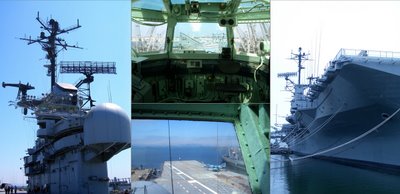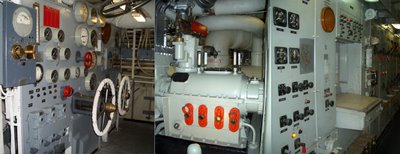uss hornet flashlight tour
 The USS Hornet (CV/CVA/CVS-12) was one of the most decorated ships in US Naval history. Launched in August of 1943, the Essex-class aircraft carrier was active in the Pacific Campaign and compiled an extraordinary WWII battle record. Through the Vietnam War, the Hornet participated in regular fleet operations as an anti-submarine platform, and in July of 1969, the Hornet was the recovery carrier for the Apollo 11.
The USS Hornet (CV/CVA/CVS-12) was one of the most decorated ships in US Naval history. Launched in August of 1943, the Essex-class aircraft carrier was active in the Pacific Campaign and compiled an extraordinary WWII battle record. Through the Vietnam War, the Hornet participated in regular fleet operations as an anti-submarine platform, and in July of 1969, the Hornet was the recovery carrier for the Apollo 11.The USS Hornet was decommissioned in 1970, but in 1996 she was saved from the scrapheap and converted to a must-visit museum docked in Alameda. I was unaware that the museum existed until Lisette, the source of many blog entries, suggested that we go check it out.
The museum is open daily, and visitors to the USS Hornet have access to the flight deck, the hangar deck and its collection of vintage aircraft, and parts of the 2nd deck including the flight ready room, the officers’ mess, officers’ berthing, the forecastle and sick bay.
With a docent tour (they leave every 30 minutes or so), you can also explore the island structure (above). The docent leads you up 5 levels to Primary Flight Control where the air boss managed all air traffic within 5 miles of the carrier. The views of San Francisco and Alameda Point are wonderful. From Pri-Fly, the tour continues to the chart room, the pilot house and the nav bridge. It concludes (~45 minutes later) with the flag bridge, where the Admiral directed operations for the carrier group.
You can spend 2 or 3 hours in the general admission areas, and it is a fantastic place to take kids. However, for the supreme experience, adults should schedule a flashlight tour. This is how Lisette and I started our day.
 Our guide was Chuck Gardner, a Hornet expert who has been working to restore the ship for the past 8 years. He led us down to the 3rd deck and the movie-set-like Combat Information Center (above). The CIC (radar room) tracked and controlled all mission-related operations.
Our guide was Chuck Gardner, a Hornet expert who has been working to restore the ship for the past 8 years. He led us down to the 3rd deck and the movie-set-like Combat Information Center (above). The CIC (radar room) tracked and controlled all mission-related operations.From the CIC we went to the Message Center (immediately below). The Message Center is actually 5 rooms packed with radios and other electronics required to send and receive top secret communications. Chuck gave us plenty of time to explore both the CIC and the Message Center, and I was fascinated by the walls of dials, the racks of equipment, and the pneumatic tube system used to re-distribute critical messages.
 Access to these two areas alone are reason enough to book a flashlight tour, but Chuck was just getting started. From the radio room we headed to one the Hornet’s 5-inch guns and some of the berthing areas for the sailors. Chuck also brought us to the Captain’s quarters and the Admiral quarter’s, although he explained that while at sea the Captain rarely left his sea cabin on the bridge.
Access to these two areas alone are reason enough to book a flashlight tour, but Chuck was just getting started. From the radio room we headed to one the Hornet’s 5-inch guns and some of the berthing areas for the sailors. Chuck also brought us to the Captain’s quarters and the Admiral quarter’s, although he explained that while at sea the Captain rarely left his sea cabin on the bridge.Next up was one of two diesel machine rooms, the source of electricity for the Hornet followed by a trip a deck down to the port catapult room. (more photos) Chuck took us further down still to give us a more of a look at life on the Hornet. Included where visits to the brig, the cobbler’s shop, the tailor’s, the dental offices and the printing room. Since he has keys to everything, Chuck also show us the un-restored the barber shop.
 Then it was off to the engine room (above).Engine Room #1 was one of two engine rooms that provided propulsion power to the Hornet. Eight boilers produced the steam required to generate 150,000 horsepower. The Hornet cruised at 15 knots but could make 33 knots in emergency situations. Finally, 3 hours after we started, Chuck brought us to some of the other warm places to work on the USS Hornet: the laundry, the unlisted mess and the bakery.
Then it was off to the engine room (above).Engine Room #1 was one of two engine rooms that provided propulsion power to the Hornet. Eight boilers produced the steam required to generate 150,000 horsepower. The Hornet cruised at 15 knots but could make 33 knots in emergency situations. Finally, 3 hours after we started, Chuck brought us to some of the other warm places to work on the USS Hornet: the laundry, the unlisted mess and the bakery.When I was growing up I loved going to the Air and Space Museum. My favorite exhibit of all was the mock carrier bridge where you directed sea-air operations. I never thought I would say this about anything, but the USS Hornet is much more impressive, and the flashlight tour is the best way to appreciate this amazing piece of our history.
Reserve spots for the September 16 flashlight tour

1 Comments:
Hi :)
I just wanted to drop by and tell you how much I enjoy your blog. :) I have wanted to take a tour of the Hornet for the longest time. I am a ghost buff, and I have seen a few documentaries about the strange going on's on board the Hornet. The flashlight tour sounds wonderful!
Post a Comment
<< Main page